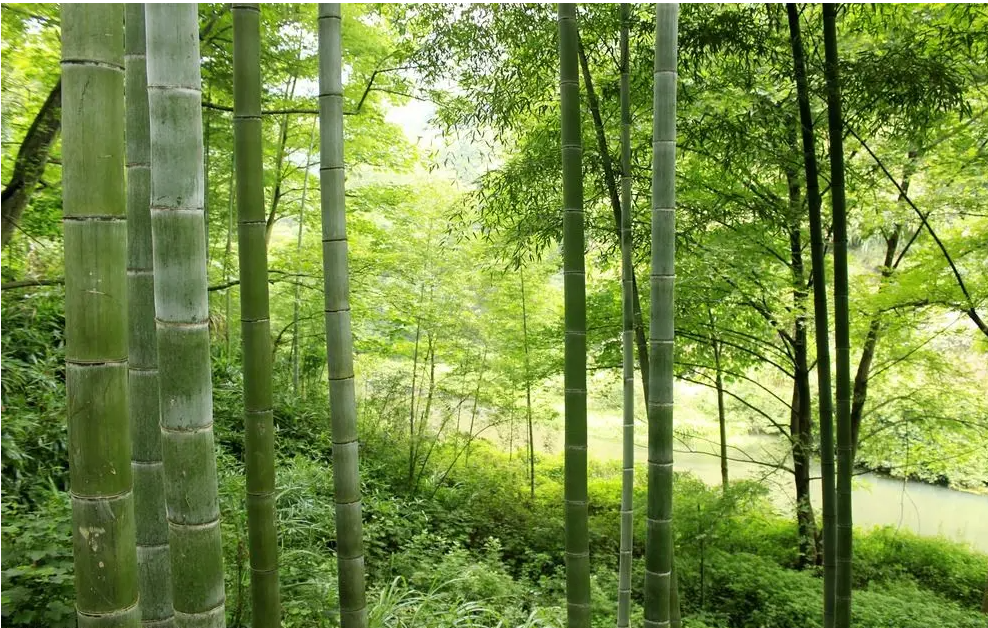1. To meet the requirements of The Times (to develop and utilize sustainable green bamboo resources and protect the global ecological environment) wood has always been the most commonly used outdoor materials, with a wide range of uses. However, due to excessive deforestation of forests, resulting f
1. To meet the requirements of The Times (to develop and utilize sustainable green bamboo resources and protect the global ecological environment) wood has always been the most commonly used outdoor materials, with a wide range of uses. However, due to excessive deforestation of forests, resulting from destruction of the ecological environment has seriously threatened our living environment. At this year's climate change conference in Copenhagen, forest destruction has been identified as one of the main factors affecting climate warming. Therefore, various countries take the protection of forests, afforestation, restriction of deforestation and export of wood as one of the important measures to reduce carbon emissions. Absolutely bamboo is the only natural material that can replace wood, and it is a sustainable and green material.

2. Current status and problems of outdoor materials (natural outdoor materials, anti-corrosion wood, wood-plastic composite materials)
1) Natural outdoor material: The traditional natural outdoor materials are mainly the precious Ibei, Merbau, teak and balao in the tropical rain forest, which consume a lot of precious and rare forest resources. With the protection of wood and global environmental resources, South Africa, South America, North America and many other primary forests have been protected, and logging is strictly prohibited. Therefore, limited by raw materials, the price and cost of natural outdoor materials are getting higher and higher, and it is becoming more and more difficult to purchase real natural outdoor materials in the market.
2) Anticorrosive woods: Anticorrosive wood is made by using the principle of pressure, put the standard wood into a pressure tank, inject wood preservative, and through vacuum pressure, make the wood preservative penetrate into the inner layer of the wood, and then vacuum pump out the tank and dry it. It has superior antiseptic properties, which can lastingly protect wood and prolong the life of wood. Such as the Nordic red pine, Russian sylvestris pine, western red cedar, ponderosa pine (southern pine). The main method of preservative treatment of wood in the world is: Using an insoluble water-based preservative, the preservative is injected into the wood fibers while pressurizing the wood in a closed vacuum tank.
For the past three decades, CCA processing has been the mainstay. CCA is not environmentally friendly, for the reason that CCA antiseptics contain heavy metal elements (chromium, copper) and a highly toxic substances - arsenic (commonly known as: arsenic). Over a long period of time, these chemicals flow into rivers and soil, which can be dangerous to people, animals and the environment, even lead to cancer. So in Europe this treatment has been banned from civil and residential projects. The arsenic contained in CCA will produce harmful gases in wood burning, causing damage to the surrounding environment. Therefore, the waste of CCA anticorrosive wood should be specially treated, It is precisely for this point that environmental protection organizations and people in some developed countries push their countries to implement regulations that no longer use CCA preservative wood.
At present, another anti-corrosion treatment method, ACQ, has gradually replaced CCA and has become the mainstream of the market.The main chemical components of ACQ (Copper Quaternary) are alkylcopper ammonium compounds. It does not contain toxic chemicals such as arsenic, chromium, neither adverse effect on the environment, nor cause harm to humans, livestock, fish and plants. However, the cost of ACQ is nearly 20% higher than CCA in terms of anti-corrosion treatment methods, and there are the following problems:
The anticorrosive effect of ACQ on white mold is not ideal, and some mold deposits will appear on the wood surface.After ACQ anti-corrosion treatment, its penetration into wood is also difficult to meet the requirements,That is, the sapwood of the wood cannot be completely saturated, so ACQ-treated wood is generally used where it does not come into contact with the soil.
3) Wood-plastic composite materials
WPC also known as environmentally friendly wood, waterproof wood, etc., is a new type of environmentally friendly composite material, which can replace wood and plastic in many occasions. Its widespread application can alleviate the situation of forest resource strain and serious. But there are problems:
a) WPC materials usually have a porosity of 16-21%, which makes them easily broken and damaged by microbial contamination;
b) Use too few antioxidants, resulting in wood-plastic board to be easily oxidized and the surface layer to fall off;
c) Common problems are product fading due to over-sanding and under-pigmentation,the surface of many wood-plastic panels is too smooth to be the most dangerous problem;
d) Most domestic wood-plastic materials use waste recycled plastics, which will soften, deform, become brittle and fracture under high and low temperature climates.
The application scope of outdoor bamboo material:
Can be used for a variety of outdoor environment ground, wall decoration, is an ideal natural material to replace outdoor high-grade rare wood
It can be used for decking and wall decoration in a variety of outdoor environments. is an ideal natural material to replace high-grade and precious outdoor wood, for which can create a beautiful, comfortable and safe outdoor recreation environment.
